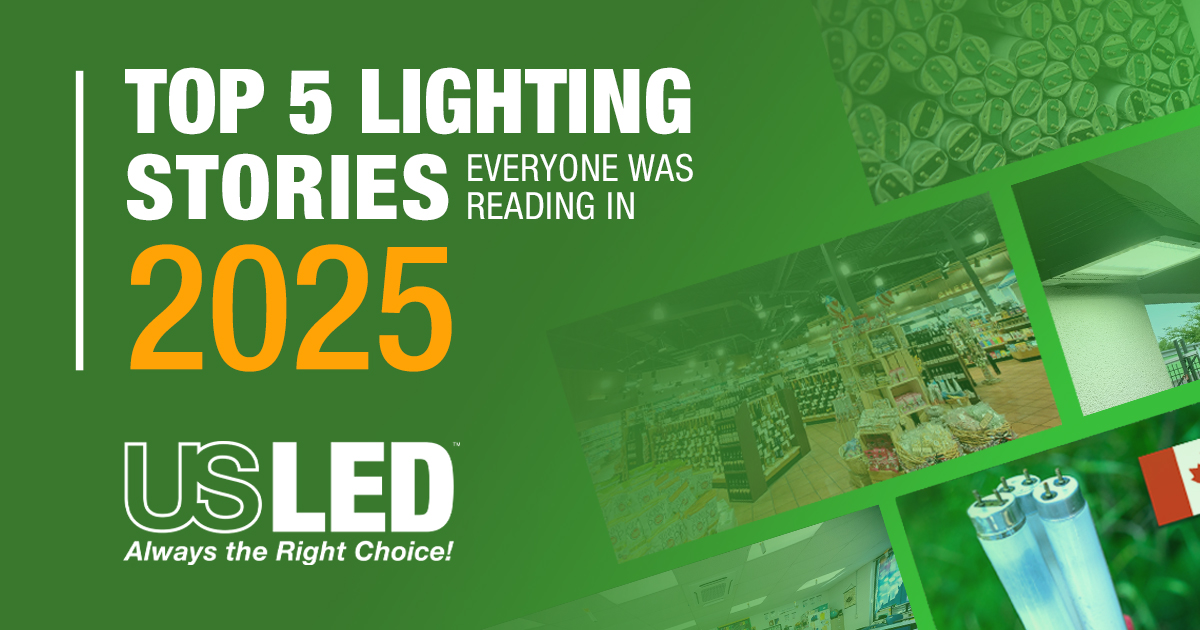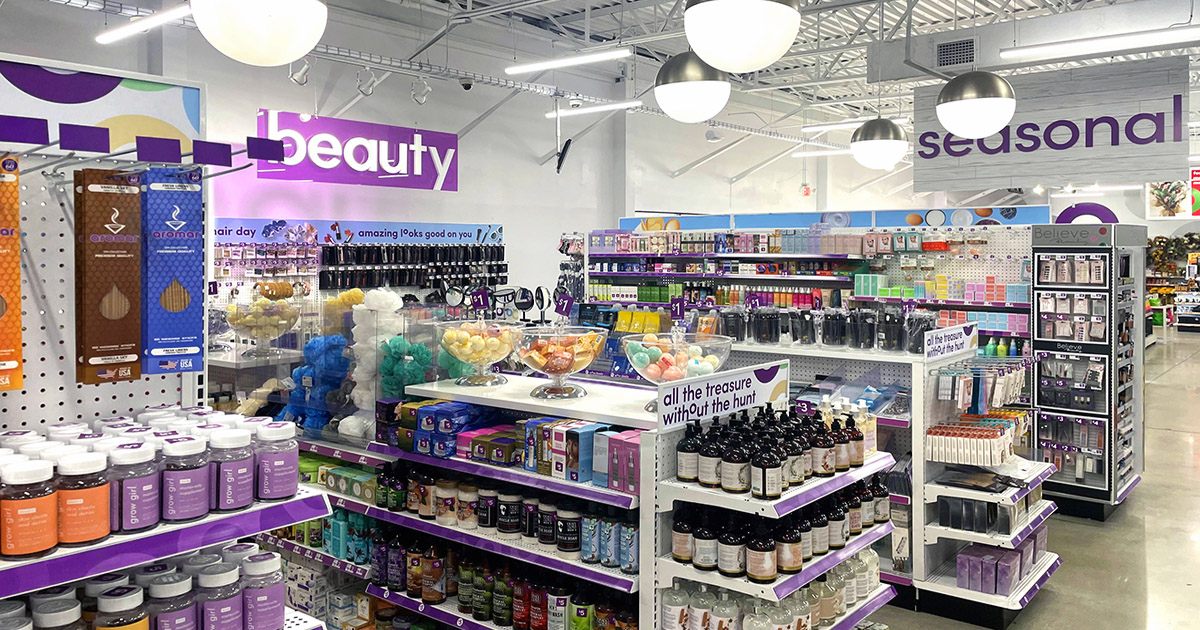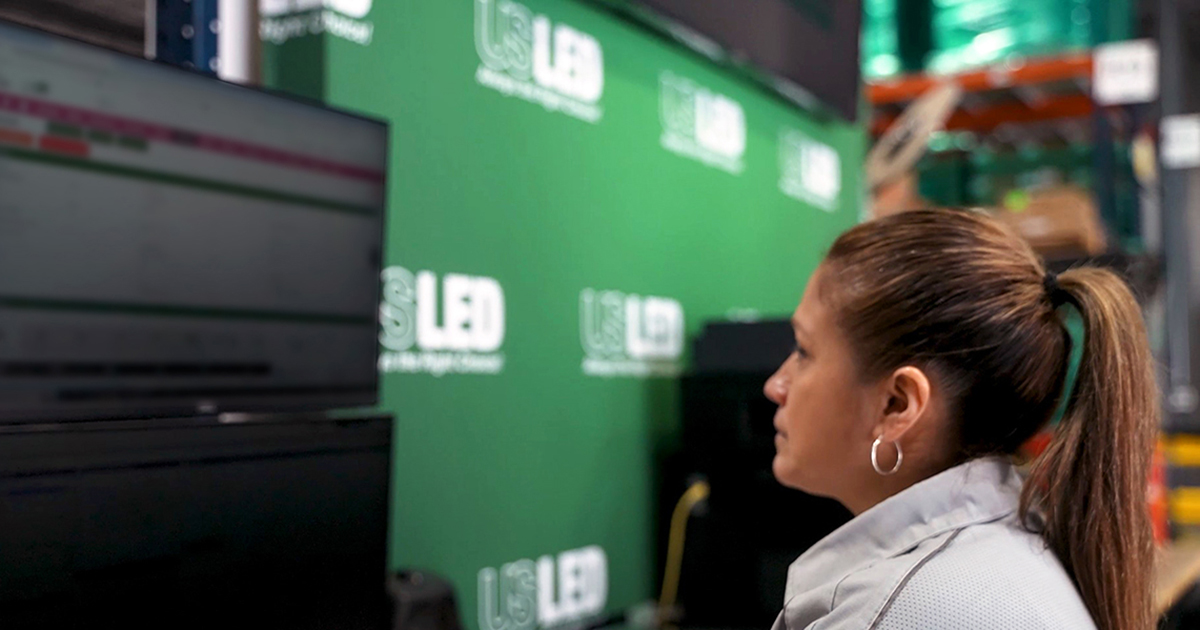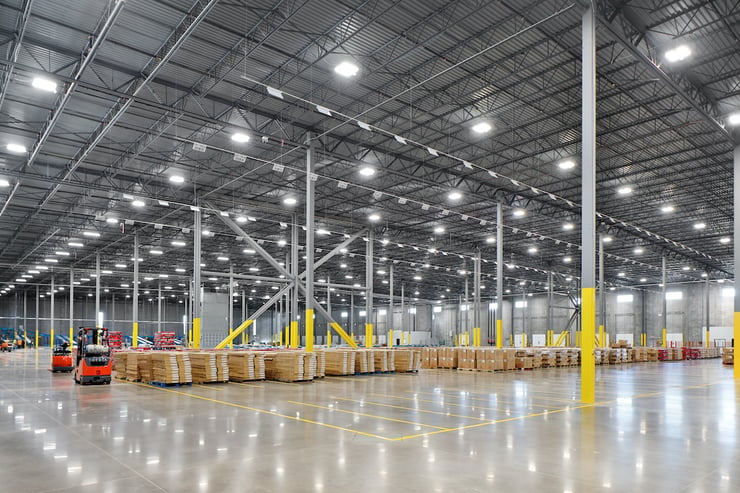
As the backbone of timely delivery and optimized logistics, warehouses and distribution centers are integral to business operations. Lighting can surprisingly affect employee efficiency and productivity which are the keys to a well-run warehouse. Let’s examine how lighting within industrial environments affects worker productivity.
Task Performance
LED lighting improves illumination allowing employees better visibility so they can see their tasks in greater detail, increasing their accuracy and work speed. In addition, a well-lit space will enable employees to see product labels and paperwork clearly, eliminating mispicks or costly shipping and manufacturing errors. This improved performance can increase profits by reducing the costs of customer returns, refunds, and expedited shipments caused by shipping the wrong item.
Employee Well-Being
Circadian rhythm is the natural cycle of physical, mental, and behavioral changes the body goes through in a 24-hour cycle and is affected mainly by light and darkness. Shift work, especially late shifts, can disrupt a body’s natural circadian rhythm. This disruption can cause workers to be less alert and even drowsy during a night shift when their bodies are accustomed to sleeping. Bright LED lights in a nighttime warehouse setting, when used in conjunction with sufficient daytime sleep, send signals to the brain that it’s time to perform certain functions, thereby improving alertness and reducing fatigue.
Additionally, traditional fixtures generate considerable heat, contributing to higher ambient temperatures in a warehouse. Employee concentration and productivity suffer if employees are uncomfortable due to extreme temperatures. LED lighting produces very little heat, which means LED lights can operate for long periods without increasing ambient temperature.
Employee and Facility Safety
Poor workplace lighting has been identified as a leading cause of slips, trips, and falls, the second leading cause of death in the workplace1 and the cause of more than 18%2 of injuries resulting in time away from work. LED lighting improves overall safety and reduces these types of injuries, making having the appropriate lighting in a facility a life-and-death matter.
Heavy machinery such as forklifts and manufacturing equipment are commonly used in industrial settings. Reliable LED lighting allows machine operators to work safely and confidently, lowering the risk of damaging property and injuring themselves or fellow employees.
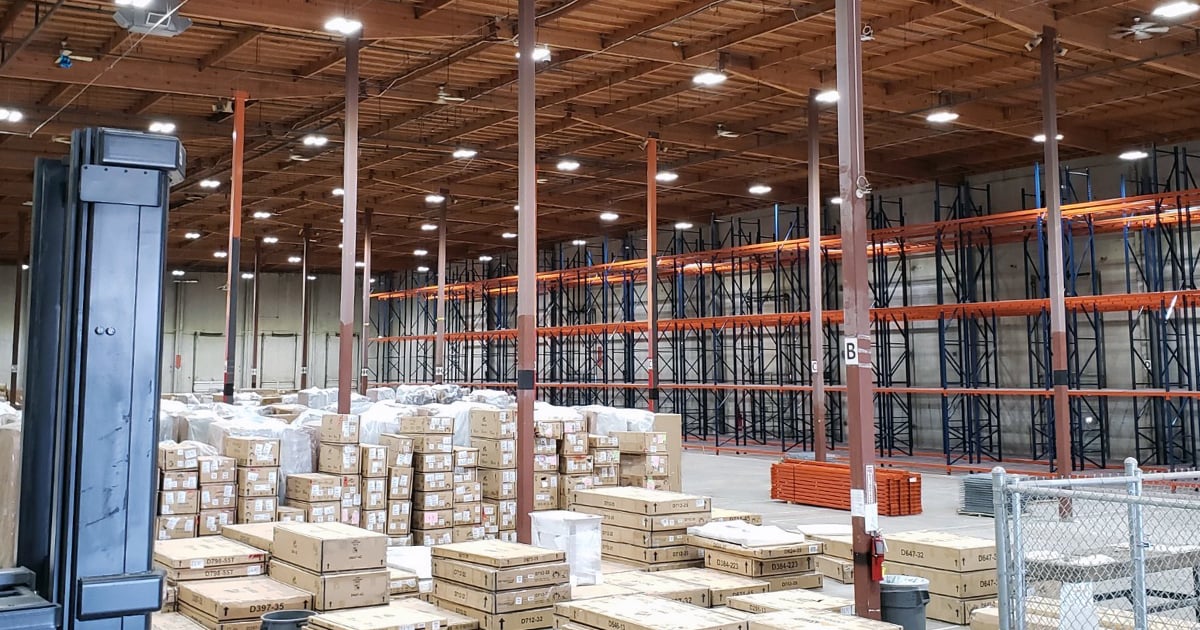
The Bottom Line
We’ve seen how LED lighting affects productivity, but how does that increased productivity affect the bottom line?
An LED retrofit provided a company highlighted in a 2018 National Bureau of Economic Research study with a 0.7 increase in productivity resulting in a surge in profits. That increase, combined with LED-based energy savings, shortened the ROI realization from 3.5 years to just two months.
The 3/30/300 Rule, defined as a breakdown of what an organization pays per square foot in total occupancy costs - $3 for utilities, $30 for rent, and $300 for employee costs - further illustrates the importance of employee productivity. While most facility managers focus on utilities and rent, emphasizing the employee factor results in a more substantive impact.
According to CBRE, the average warehouse in the United States was just over 180,000 square feet as of 2017. Applying the 3/30/300 Rule, you would spend:
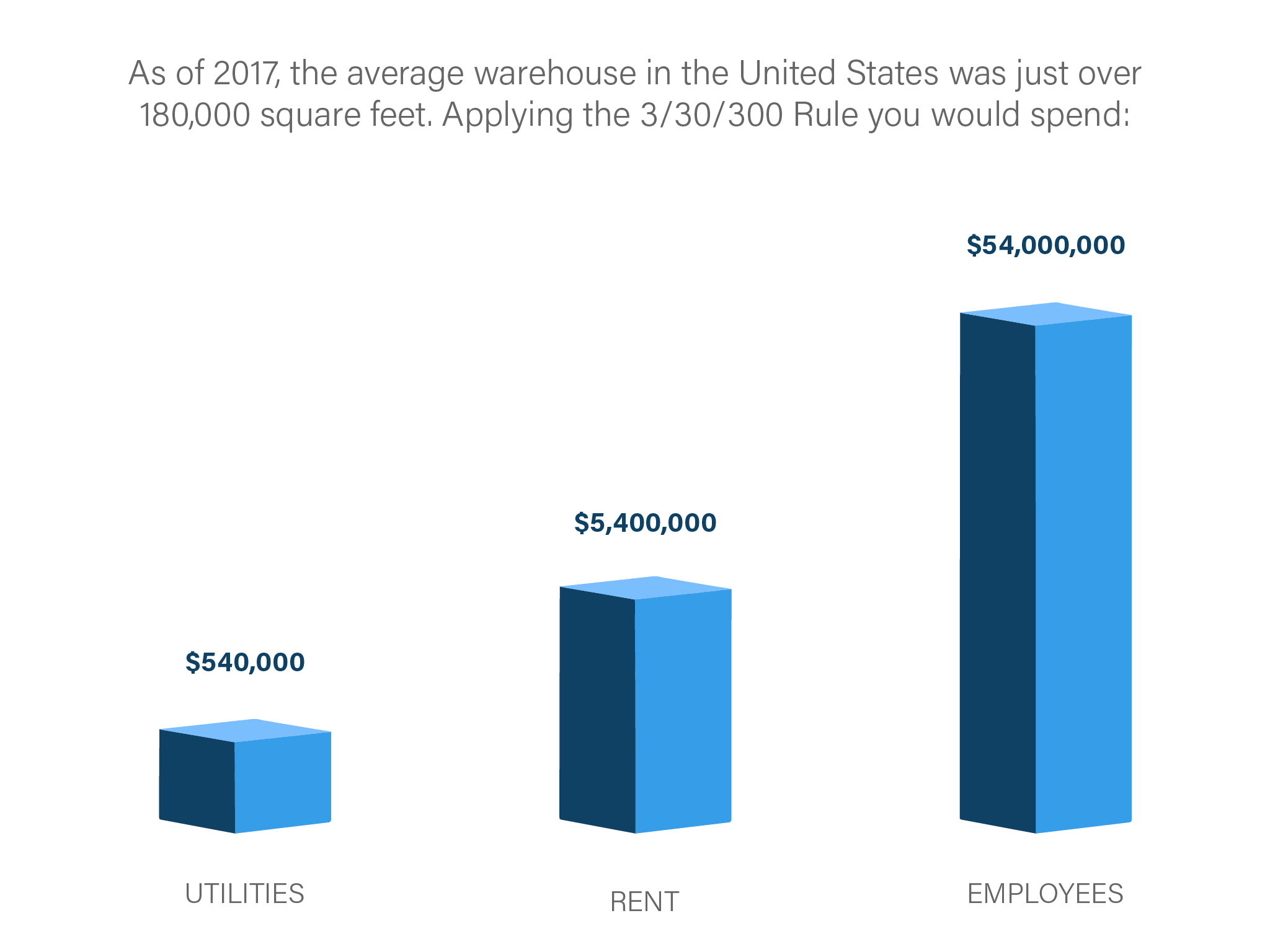
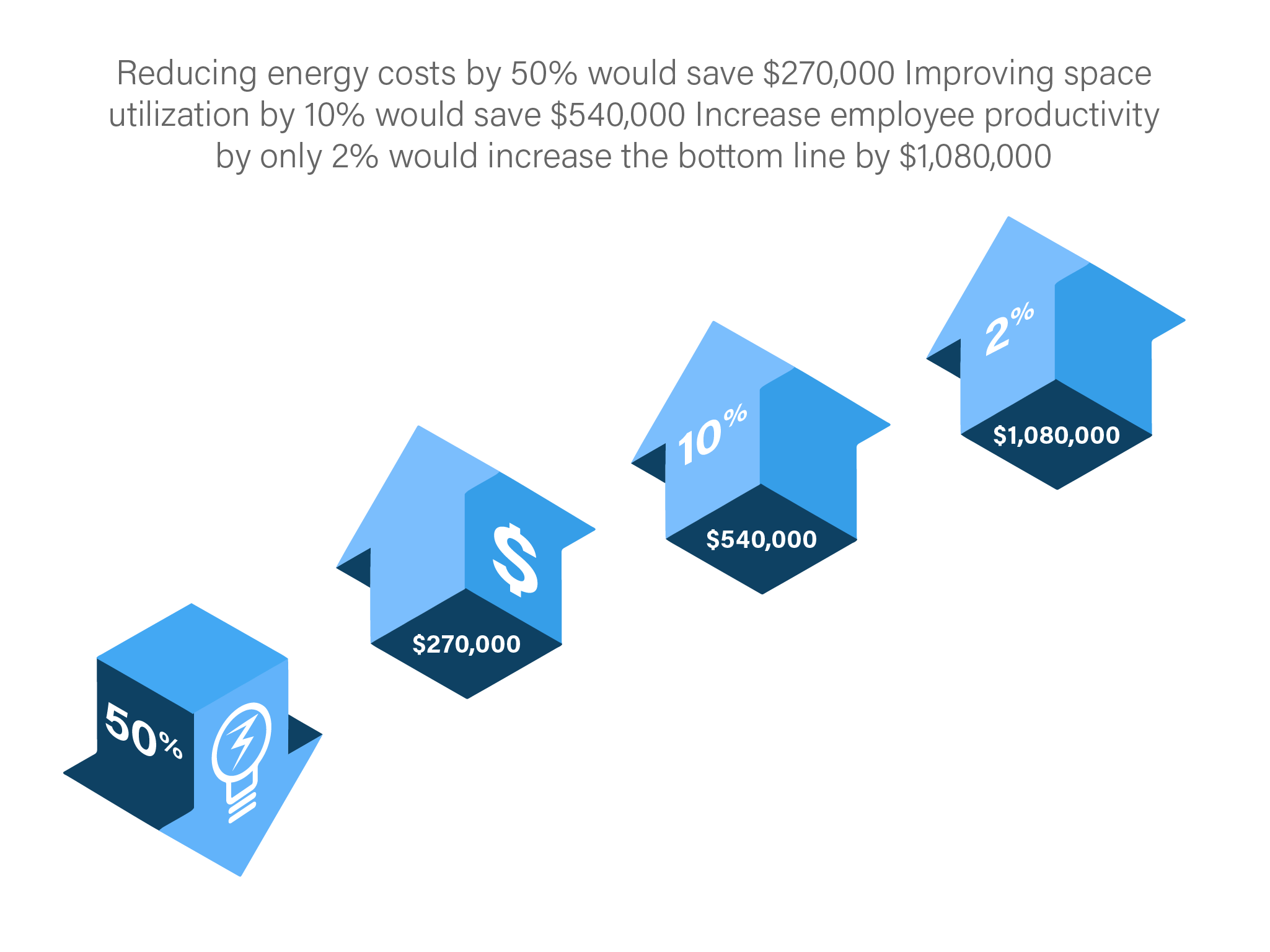
Just a small increase in productivity quickly outweighs the hefty energy savings LEDs can provide.
LED lighting systems installed by a trusted provider enable increased employee productivity in addition to substantial energy and maintenance savings all of which optimize operational efficiency and grow your bottom line.
Sources
1 https://archive.cdc.gov/#/details?url=https://www.cdc.gov/niosh/injury/fastfacts.html
2 https://www.cdc.gov/niosh/?CDC_AAref_Val=https://www.cdc.gov/niosh/programs/wrt/falls.html

